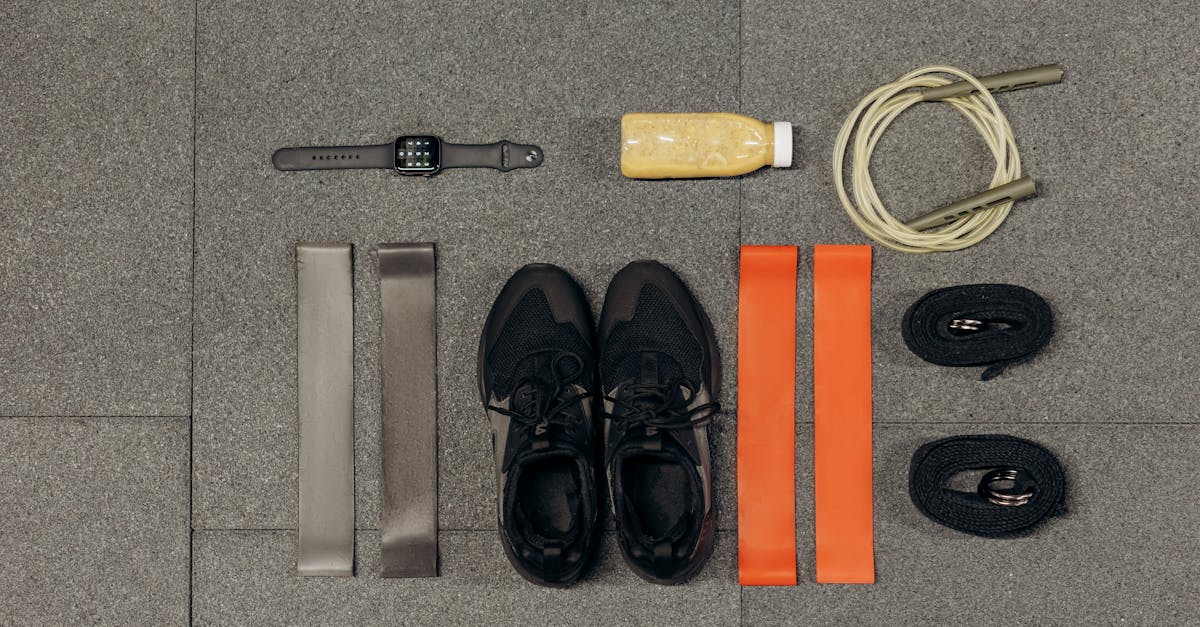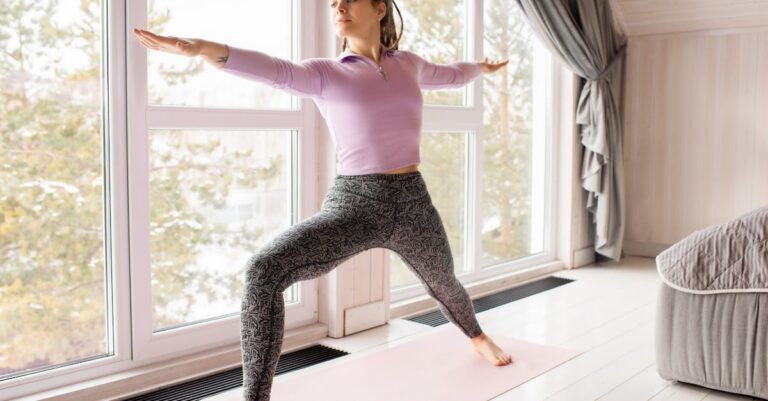So, you wanna get stronger and build some muscle, but the idea of heading to a crowded gym just isn’t your vibe? Maybe it feels intimidating, costs too much, or honestly, you just prefer working out where you can blast your own music and maybe wear mismatched socks. Totally get it! You’re motivated, ready to put in the work, but need a clear plan for doing it right there at home. Good news! This article is your roadmap. We’re gonna walk through setting up a killer home workout plan designed to help you gain muscle. We’ll cover the gear you actually need (hint: it’s less than you think!), how muscles even grow, structuring your workouts, key exercises, and the fuel you need. Stick around, and you’ll have a solid game plan to start building muscle effectively, all from the comfort of your own space.
Gearing Up: What You Really Need
Okay, first things first: you don’t need a garage full of fancy machines that look like medieval torture devices to build muscle at home. Seriously! You can get started with the most basic (and free!) tool: your own body.
Think about exercises like push-ups, squats, lunges, and planks. These are awesome for building a foundation. As you get stronger, you’ll need more challenges. That’s where a few key pieces come in handy:
- Resistance Bands: These are like giant rubber bands. They’re cheap, take up almost no space, and are amazing for adding resistance to tons of exercises. Great for warm-ups and making bodyweight moves harder.
- Adjustable Dumbbells or Kettlebells: If you have a bit more budget and space, these are fantastic. Instead of buying a whole rack of weights, you get one pair that you can change the weight on. Super versatile for exercises like rows, presses, and squats.
- Pull-Up Bar: One that fits in a doorway can be a game-changer for building back and arm strength. Even if you can’t do a pull-up yet, you can work towards it!
Imagine trying to lift your heavy school backpack. That resistance makes your muscles work. Now, picture adding more textbooks – it gets harder, right? That forces your muscles to adapt and get stronger. That’s the basic idea! Start simple, and add ‘textbooks’ (more resistance) as you go.
How Muscles Get Bigger (The Simple Scoop)
Why does lifting stuff actually make your muscles grow? It sounds a bit weird, but it’s pretty cool. When you challenge your muscles with exercises that are tough for them – like doing those push-ups or lifting those dumbbells – you create tiny little micro-tears in the muscle fibers. Don’t worry, it’s a good thing!
Think of it like building with LEGOs. The exercise is like carefully taking apart a small section of your LEGO tower. Then, your body goes into repair mode. It not only fixes those tiny tears but also adds a few extra LEGO bricks, making the muscle fibers thicker and stronger so they can handle that challenge better next time. This process is called hypertrophy.
But here’s the catch: your muscles are smart. They adapt. So, to keep them growing, you need to keep challenging them more over time. This is called progressive overload. It just means gradually making your workouts harder. Maybe you lift slightly heavier weight, do one more rep than last time, do an extra set, or even just rest a little less between sets. Keep giving your muscles a reason to grow!
Building Your Weekly Plan: Splits & Schedules
Alright, you’ve got some gear (or just your body!) and you know you need to challenge your muscles. Now, how do you organize your workouts through the week? Randomly doing exercises whenever you feel like it won’t be super effective for muscle gain. You need a plan, often called a workout ‘split’.
Here are a few simple options that work great for home gyms:
- Full Body Workouts: You work all your major muscle groups (legs, chest, back, shoulders, arms) in each session. This is great for beginners and usually done 3 times a week, like Monday, Wednesday, and Friday, with rest days in between.
- Upper/Lower Split: You have days dedicated to your upper body (chest, back, shoulders, arms) and days for your lower body (legs and glutes). A common schedule is Upper Body on Monday, Lower Body on Tuesday, rest Wednesday, Upper on Thursday, Lower on Friday. This lets you work muscles more often while still giving them rest.
- Push/Pull/Legs (PPL): This is a bit more advanced. You have ‘push’ days (exercises like push-ups, shoulder presses), ‘pull’ days (like rows, pull-ups), and ‘leg’ days (squats, lunges). You might do Push on Monday, Pull on Tuesday, Legs on Wednesday, rest Thursday, then repeat or mix it up.
The key is consistency and recovery. Aim to work out 3-5 days a week, making sure each major muscle group gets worked about twice a week, with rest days built in so those LEGOs can get rebuilt bigger and stronger.
Must-Do Moves for Home Muscle
You don’t need a zillion different exercises. Focusing on the basics – especially compound exercises – is the way to go. Compound exercises are moves that work multiple muscle groups at the same time. They’re super efficient!
Here are some staples you can likely do at home:
- Squats (Bodyweight, Goblet Squat with Dumbbell): Works your quads, glutes, hamstrings – basically your whole lower body.
- Push-Ups (On knees, standard, incline/decline): Hits your chest, shoulders, and triceps.
- Rows (Dumbbell Rows, Resistance Band Rows): Great for building your back and biceps.
- Lunges (Bodyweight, with Dumbbells): Another fantastic lower body exercise, great for balance too.
- Overhead Press (Dumbbells, Resistance Bands): Builds strong shoulders.
- Plank: Awesome for core strength, which helps with everything else.
- Glute Bridges (Bodyweight, Banded): Targets your glutes and hamstrings.
Think about picking up a really heavy box off the floor. You don’t just use your arms, right? You bend your knees (legs), keep your back straight (core, back), and then lift (arms, shoulders). It’s a full-body effort! Compound exercises are like that – they give you more bang for your buck compared to exercises that only work one tiny muscle at a time.
Reps, Sets, and Rest: Finding Your Sweet Spot
So you know *what* exercises to do, but *how many* should you do? This is where reps (repetitions, how many times you do the move in a row) and sets (groups of reps) come in.
For building muscle (that hypertrophy thing we talked about), a good starting point is often:
- 3 to 5 sets per exercise.
- 8 to 12 reps per set.
Now, these aren’t magic numbers etched in stone. The important part is the effort. By the last couple of reps in each set, it should feel really challenging. Like, you *could* maybe squeeze out one or two more, but it would be tough, and your form might start to wobble. That’s the sweet spot – pushing yourself close to failure, but not *to* failure where your form breaks down completely.
What about rest between sets? For muscle growth, resting about 60 to 90 seconds usually works well. It gives your muscles a quick breather so you can hit the next set hard, but it’s not so long that the intensity drops too much. Listen to your body, though! If you need a little more or less rest, that’s okay. Some days you’ll feel like Superman, others maybe less so. Adjust accordingly.
Fueling the Machine: Eating for Gains
You can work out all you want, but if you’re not giving your body the right fuel, building muscle is going to be tough sledding. Think of your body like a construction site.
You need two main things:
- Energy (Calories): This is the power for the construction crew (your body) to do the work of repairing and building muscle. To build muscle, you generally need to eat slightly *more* calories than you burn each day. This is called a calorie surplus. Don’t go crazy and eat everything in sight, but a small extra amount helps provide the energy needed for growth.
- Building Blocks (Protein): This is the actual material – the bricks, wood, and cement – used to build the muscle tissue. Protein is crucial! Aim to get enough protein throughout the day from sources like chicken, fish, lean beef, eggs, dairy, beans, lentils, tofu, and maybe a protein powder supplement if you find it hard to get enough from food alone.
Remember our LEGO tower analogy? Calories are the energy your builder needs to work all day, and protein provides the actual LEGO bricks to make the tower bigger and stronger. You need both!
Don’t forget water! Staying hydrated is super important for everything your body does, including muscle function and recovery. Keep things simple: focus on eating mostly whole, unprocessed foods, get enough protein, stay hydrated, and make sure you’re eating enough to support your muscle-building goals.
So, there you have it! Building muscle at home is totally achievable. We’ve covered that you don’t need a ton of fancy equipment – basic gear like dumbbells or even just your bodyweight can work wonders. The key is understanding how muscles grow: you challenge them (progressive overload!), then let them recover and rebuild stronger. Setting up a smart weekly schedule (like full body or upper/lower splits) keeps things organized and ensures recovery. Focusing on big compound exercises gives you the most bang for your buck. Aiming for that 8-12 rep range with good effort, and fueling your body with enough calories and protein provides the energy and building blocks you need. You’ve got the knowledge now to put together a really effective home workout plan. Remember, consistency is your best friend here. Start where you are, focus on good form, make things gradually harder over time, and be patient. Enjoy the journey of getting stronger in your own space!










